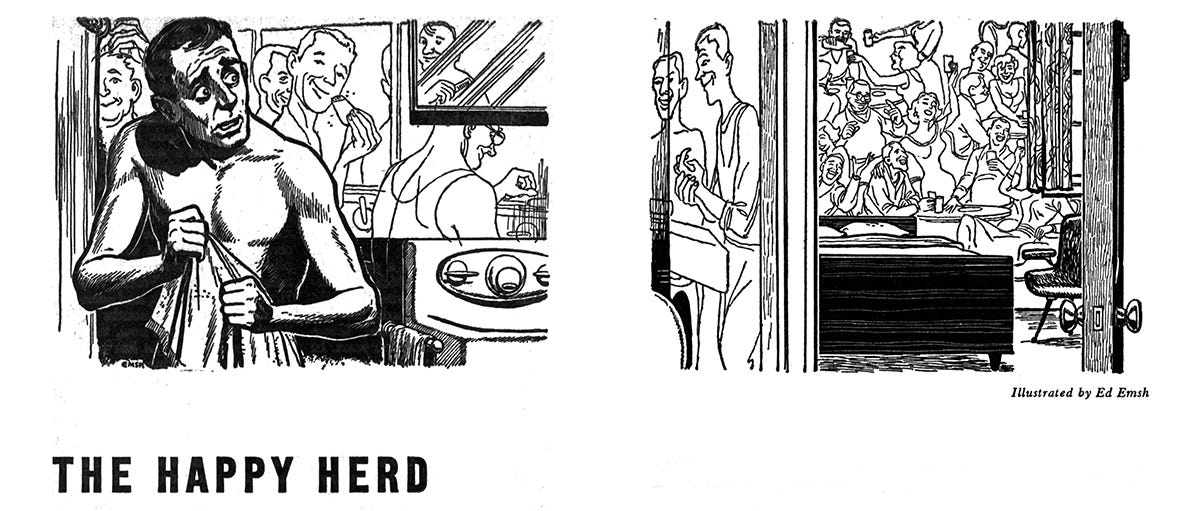Bryce Walton and the Many Faces of Dystopia
This week I’m going to introduce you to a story-spinner you’ve almost certainly never heard of. The man’s name is Bryce Walton (1918 –1988) and he was the best dystopianist writer that I have ever read.
Biographical information on him is limited but I do know that he served as a navy correspondent during WWII and began his career as a freelance writer in 1945. He is credited as a writer for the TV serial, Captain Video and His Video Rangers (1949-1955). In 1961, he won the Alfred Hitchcock Best Short Story award. He wrote three episodes of Alfred Hitchcock Presents, and two of his stories were adopted for the series, including "The Greatest Monster of Them All."
For the most part, Walton was a short story writer. His prolific works were published in pulp and later, sci-fi magazines. Many of his stories were never reprinted. He wrote a lot of dystopian tales, most of which are real chillers. In the preface for “The Agents” (Avon Science Fiction and Fantasy Reader, January 1953), Walton is quoted as saying that he attempts to portray a world that begins where George Orwell’s “1984” leaves off. In my opinion at least a dozen of Walton’s dystopias out-do the psychological nightmare of “1984.” Orwell’s story shows us a simple Communistic state taken to extremes. But Walton takes the genre farther, skillfully showing many types of nightmare scenarios.
Here are some of my favorites.
“The Victor” (1953)—A Utopia where undesirables are to reconditioned into machine-like drone workers. It ranks the top of my list for best dystopian story, ever.
“The Happy Herd” (1956)—shows us a world where people are socially-conditioned and twisted into narcissism. Every feature of their lives is visible to their “group.” The story is an excellent portent of our own social media.
“World of No Return” (1949)—a chilling tale of a human-like robot named, Della, who wants love. What she does to the astronaut who ends up marooned on Mars still gives me nightmares.
“Jack the Giant Killer” (1955)—set in a Utopian world where secret police look for signs of disloyalty amongst the populace. Franz is nine years old and a brutally cold child who is the secret police’s youngest Junior Investigator. His twisted journey is the subject of this tale.
“Star Bright” (1951)—shows us another Communist Utopia where workers are pacified by virtual reality-style “sensory shows” and virtual movie-star lovers. But Andy Brooks wants more. He begins by killing is wife, then goes hunting for his favorite starlet in the movie studios on the Moon. What he learns there breaks the paradigm of his life.
“The Cradle” (1958)—is “Fight Club” meets “The Stepford Wives.” Except that this came first.
“The Third City” (1956)—a story of political correctness gone mad. In this society you either fit in or you don't. If you don’t, you’ll be “modified” so that you do.
“Polyoid” (1951)—takes place in city run by a giant computer. Humans are selected to become living circuits within the machine. It’s an exciting honor. At least that’s what Sam Forbes thinks—until he’s chosen.
Each story offers a different type of dystopian scenario. These societal nightmares are abject lessons in how not to create a society. If you miss the caution, you get the nightmare. Several of Walton’s stories have either already come true, in a broad sense, or are their way in. For the latter, let’s hope we can still pull out in time.
You can read many of Bryce Walton’s stories on Project Gutenberg .
This is the Rocketeer signing off for today.






